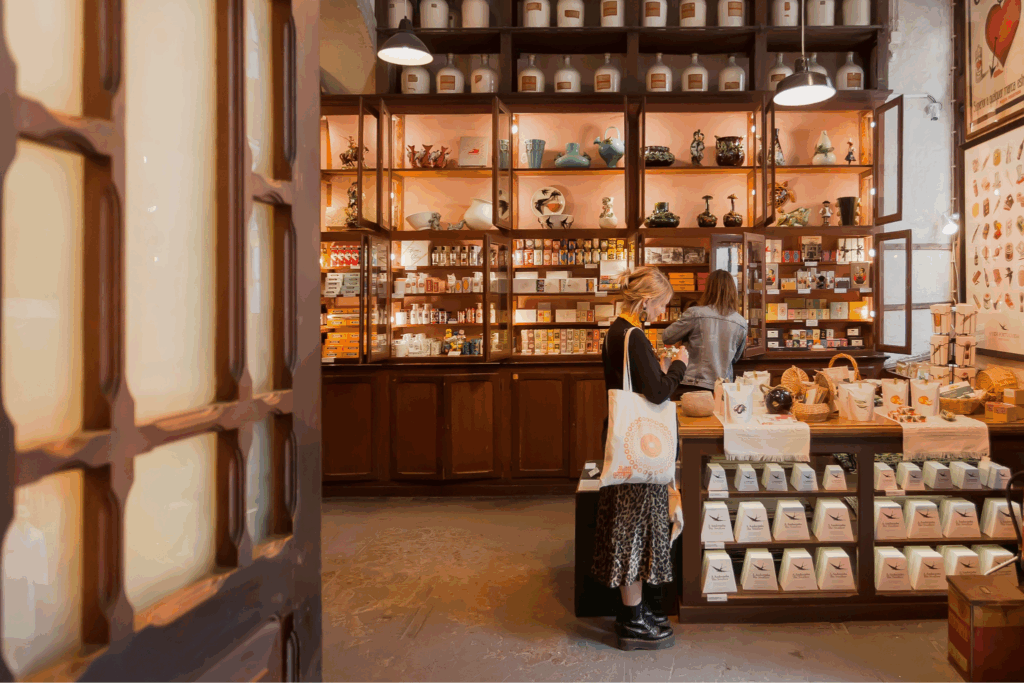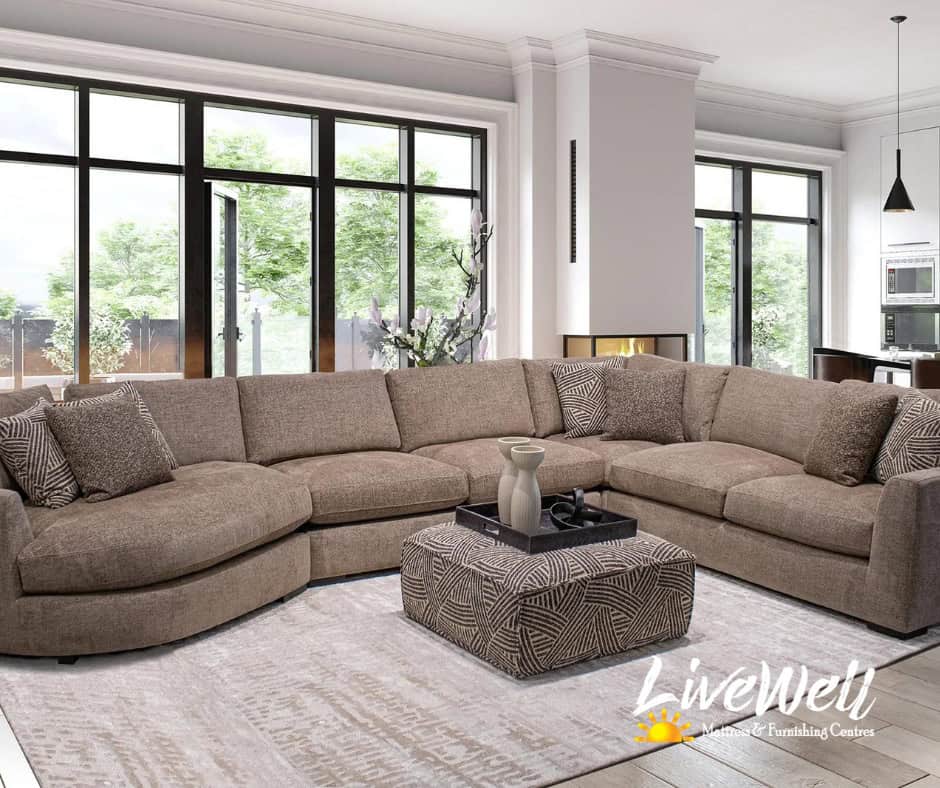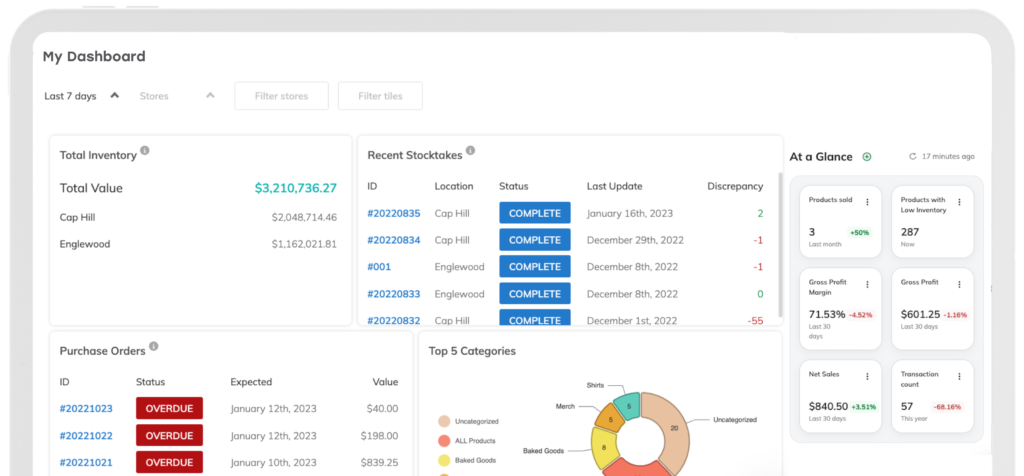
Understanding Inventory Breadth Vs. Depth: What All Retailers Need To Know
One of the most crucial elements of inventory management is how to strike the appropriate balance between breadth and depth. Is it better to have a few items across many product categories, or go deep and narrow into a few specialties? The correct product assortment strategy is key to long-term stability and success, making it even more important to get right.
Accurately calculating inventory breadth and depth helps you build a smarter, more intentional retail assortment. A balanced inventory approach is key to meeting your customers’ needs and keeping costs under control. Learn more about these two concepts, along with real-world tips for balancing inventory breadth and depth that make sense for your business.
What Is Inventory Breadth?
Inventory breadth refers to the variety of product lines and categories that a business offers. It’s what gives customers the sense of choice across multiple areas, even if there are only a few product options in each category. For example, a hardware store’s broad inventory includes tools, paint, lighting, plumbing supplies, lawn care items, nails and screws, home decor, and home repair kits.
Why a broad product assortment draws in more shoppers
Customers are often drawn to a retail store or websites where they feel they’ll find everything they’re looking for in one place. When you focus on inventory breadth, you increase the likelihood of meeting those customer needs. After all, a gardening center without shovels and gloves sends shoppers to other stores for those essentials.
A broad product assortment increases basket size, or how much money a shopper spends per transaction. The hardware store upsells and cross-sells brushes, sanding blocks, and painter’s tape with every gallon of paint sold.
Power Up
Transform every customer interaction into a chance for higher profits and greater retention through expert upselling and cross-selling techniques.
Inventory breadth helps hedge against seasonal changes or category-specific downturns, too. If one category underperforms, others help sustain the business.

How inventory breadth shapes customer experience
- It introduces shoppers to different product categories. The sheer number of product lines offered in your store is called “category breadth,” and it encourages customers to explore other products they want and need without leaving your shop or website. Expanding your assortment keeps shoppers engaged, introduces them to new brands, and offers fresh ways to put your products to use. Any store that carries many distinct product categories, think a convenience store or a gift shop, is invested in category breadth.
- It caters to what customers want. If customers keep asking for certain complementary products, adding them increases both satisfaction and sales. Pay attention to these customer requests, as well as market trends, to guide what and when you add to your inventory. Conducting a competitive analysis to see what’s successfully selling for others in your industry helps get you started.
- It enhances shoppers’ experience with your brand. Expanding breadth thoughtfully helps reinforce your brand’s identity and can also set you apart from competitors. Stores focused on eco-conscious goods, for example, aren’t limited to just two or three categories. They can carry soft lines, giftables, hard goods, sustainably-packaged snacks, personal care products, and many more categories under one roof, and all of those categories uphold the store’s commitment to an environmentally-friendly future.
- It reduces customer choice paralysis. When you offer a wider breath of products, you typically have to be more selective with the options you offer for each category. This makes it more likely that the items on your shelves have been personally vetted by you and your team. Customers are able to trust your selection without a larger volume of products to overwhelm their choice.

What Is Inventory Depth?
Inventory depth refers to the quantity and variety of stock within a specific product line or category. Depth is about how many styles, colors, sizes, models, or price points you offer for one given type of product.
Product depth is favored by businesses focusing on expertise in a narrow area, marketing themselves as a go-to destination for a massive selection within a specific product category. A sneaker shop won’t have loafers, slippers, or heels. Instead, the store carries only running, walking, tennis, hiking, golf, basketball, lifestyle, and training sneakers.
How inventory depth helps you build customer loyalty
Depth is important because it satisfies shoppers who want more choice in a category or who seek out a specialized item in one particular category. Those customers expect to see larger assortments and more options. Otherwise, they’ll turn to a competitor. Knowing how to offer a diverse product range to those shoppers is essential as part of an inventory depth strategy.
Key aspects of inventory depth
- Carrying items at different price points. Offering multiple options within one product category requires a mix of opening price point, mid-tier, and high-end items. This builds in “good, better, best” options that appeal to a wider range of shoppers. For example, a bike shop offers entry-level bikes for casual riders, mid-tier bikes for enthusiasts, and high-end editions for serious cyclists. This allows the shop to serve a broader range of cyclists in the same place.
- Stocking products that address functional depth. When you carry variations of a product that meet different needs within a single category, that’s referred to as functional depth. A cookware store that carries knives designed for paring, chopping, deboning, and slicing bread is an example of functional depth in practice. Customers who care about having the right tool for the job will appreciate a retailer who offers this kind of depth. Creating a buyer’s guide that details each item’s features and capabilities is a valuable tool for educating prospective customers. This way, they’re truly able to make an informed buying decision that meets all of their needs.
- More options based on aesthetics. Appearance depth focuses on offering aesthetic variety through different colors, patterns, styles, or designs. This is common in boutiques that carry the same T-shirt in four colors, a bedding store with sheets in cotton, silk, linen, flannel, and bamboo, or furniture stores that offer the same sofa in a dozen fabric options. This type of depth boosts sales by offering customers more options that appeal to their personal tastes.

3 Proven Ways To Plan Your Inventory Assortment
1. The wide approach: Covering many needs
A wide assortment strategy prioritizes breadth over depth. Business owners who take this approach aim to cover as many categories as possible, offering a handful of options in each. This works well for generalists, one-stop shops, or stores targeting convenience-driven customers. A gas station convenience store is a prime example because it carries a vast product mix, but only stocks one or two brands for each type of product.
The tradeoff here is that you won’t offer a deep variety within each category. While customers won’t have a lot of choice, you’ll offer almost every type of item they want.
2. The deep approach: Specializing for impact
A deep product assortment strategy prioritizes depth over breadth. Businesses using this approach focus on fewer categories but stock a larger variety within each. This is common for specialty retailers who aim to be experts in their niche. The deep assortment tradeoff is that you’re appealing to a narrower customer base and relying on being the best at one thing, rather than serving a wide array of clientele.
A farmers market, for example, exemplifies this strategy by carrying an unparalleled range of produce and organic foods, but little outside its core focus. Their customers value expertise and options within that specific healthy eating category and are willing to shop elsewhere for unrelated items, like laundry detergent.
3. A hybrid model: Best of both worlds
A mixed strategy combines elements of inventory breadth and depth, offering breadth in some categories and depth in key focus areas. This mixed inventory assortment allows businesses to appeal to general customers while still maintaining expertise in select categories.
Take a home goods market, for example. The store carries a wide range of products for the kitchen, bathroom, living spaces, and bedrooms at a range of prices. They also happen to be one of only a few retailers to carry a high-end brand of Dutch cookware. This exemplifies the inventory mix strategy. It provides multiple choices for their specialty category while drawing in more customers with their wide assortment of other items they are interested in buying.
Power Up
Ready to increase sales and streamline your stock management? Start optimizing your product assortment today with insights from our blog.
How To Strike The Right Balance Between Inventory Breadth And Depth?
Work within your budget without sacrificing strategy
Many retailers face financial constraints that don’t make pursuing inventory depth and breadth possible. That means increasing breadth by adding more categories requires giving up some depth, and vice versa. The key is prioritizing the right mix based on what delivers the best return on investment.
A good rule of thumb: build a budget based on past sales data. Identify your top-selling items and give them the depth they deserve. You’ll then use the remaining budget to maintain enough breadth to keep customers engaged.
Tap into consumer demand to drive decisions
If you don’t know what your customers want, you risk investing in the wrong inventory mix. Use sales data and customer feedback to best meet consumer demand. With this information, you’ll make an informed decision on when, if, and how to increase some variety and cut others that are underperforming. Let your customers tell you what they value, and don’t assume you already know.
Pay attention to seasonal changes and market trends
Your inventory strategy shouldn’t be static. It needs to adapt to what’s going on around you. Staying in tune with what customers want at different times of year keeps inventory relevant and your shop profitable.
Plan for multiple seasonal reviews to ensure you have the right inventory mix for the weather, holiday seasons, and local events, just to name a few. Carrying bathing suits in November and pine needle-scented candles in May risks burning through your cash and taking up valuable shelf space.

Make the most of your shop and storage
Your available square footage and backroom storage affect your inventory strategy. Physical space constraints how much breadth and depth you’ll realistically carry without creating clutter. If a smaller store tries to widen its assortment too much, it’ll be left with cramped aisles and overwhelmed shoppers.
Power Up
Maximize your storage space and protect your products by implementing proven inventory storage strategies designed for small businesses.
Evaluate competitors
Where you sit in the competitive landscape should inform your breadth and depth decisions. Are you positioning yourself as a niche expert or a broad-market one-stop shop? Either is valid, but you can’t do both equally well. Use consumer and market research to identify gaps in your area and position your breadth and depth accordingly.
Start small
When in doubt, don’t try to do too much too soon. Many small businesses benefit from starting with a moderate breadth of product categories, then deepening the categories that customers respond to most. Starting small lets you test the waters without wasting money on categories or inventory levels that won’t pay off. This allows you to easily sell more in the long run.
Track results
Small business inventory assortment planning isn’t a one-time decision; it’s an ongoing process. Review your inventory metrics regularly to identify where you’re overstocked, understocked, or where you’re missing opportunities to expand. Make adjustments to breadth and depth accordingly. You’ll shift the budget and shelf space back and forth between categories as customer preferences evolve, but that’s OK. These changes keep your store competitive and profitable.
If you don’t already have a recurring review cadence, set one up and stick to it. Adhering to a monthly, quarterly, or seasonal schedule ensures you prevent excess inventory and consistently align your strategy with real-world data.
Discover Powerful Product Insights You’re Missing
Eliminate “guesstimating” with detailed inventory and sales reports so you can make product assortment decisions confidently and report with accuracy.
3 Inspiring Real-World Success Stories

How Stone’s Beer & Beverage Market leveraged inventory depth
Stone’s Beer & Beverage Market in Philadelphia is a destination for beer lovers thanks to its commitment to inventory depth, carrying an impressive array of craft, imported, and local beers. Stone’s wanted to keep up with evolving customer expectations without compromising their depth strategy. To make their product selection more accessible to interested customers, Stone’s opted to create new avenues for customer education and engagement.
When redesigning their retail storefront, Stone’s owner, Nick Wendowski, envisioned a space that functioned as a “state-of-the-art beer store,” offering a range of experiences in addition to a vast selection of beverages.
“We want to create a destination for beer lovers, a place that combines retail, education, and community,” said Wendowski before the store’s opening. “The new store will have a tasting bar, event space, and a curated selection of rare and unique beers from around the world.”
Power Up Podcast: Stone’s Beer & Beverage Market
Nick shares how he focuses on being the best beer destination in Philadelphia and competes with corporate liquor stores.

How Barton Springs Nursery won with inventory breadth
Barton Springs Nursery in Austin saw great success by expanding its inventory breadth. Originally just a plant nursery, owners Amy Hovis and Greg Thomas added a gift shop, high-end Fermob outdoor furniture, a boutique skincare line, events, and other categories. Each product line is aligned with their brand ethos of sustainable and beautiful living. This wide assortment brings back customers for more than just plants, making Barton Springs a local shopping destination.
“We’ve always been interested in plants, not just as decoration but as part of a lifestyle and how they can improve your wellbeing,” Hovis said in regard to Barton Springs’ product expansion. “We started looking into how plants can be used in skincare, and it just made sense to create a line that uses botanicals from the nursery…It’s a small line right now, but it’s growing. It’s another way to bring people in year-round, especially during the winter when plant sales slow down.”
Power Up Podcast: Barton Springs Nursery
As Barton Springs Nursery transitioned from running a business to a growing one, they opened “mini businesses” to create demand year-round.

How Live Well Furnishings used customer feedback to expand its inventory mix
Live Well Mattress & Furnishings, based in southern New Mexico, offers breadth by carrying a range of furniture, mattresses, and bedding, but they also go deep in certain key categories, like adjustable beds and pillows. They didn’t always do so, though. The shop started exclusively as a mattress and bedding provider, but expanded into other categories after customers shared their feedback.
“We’re primarily a sleep store,” said owner Javier Casillas. “It’s Live Well Mattress and Furnishings because our customers demanded that we carry furnishings. They loved [shopping for] mattresses with us, so they wanted furnishings to be brought into the stores, too. Customer demand is why we brought in furniture.”
Power Up Podcast: Live Well Mattress & Furnishing
Learn how Javier uses AI, customer feedback, and Google Trends to expand his product assortment strategy.
The Art Of Assortment
At the end of the day, inventory breadth and depth are strategic levers to grow your business. Whether you go wide, deep, or strike a balance, it’s all in response to customer behavior, what fits your brand, and the resources available to you. The most successful businesses listen to their customers, watch their numbers, and make adjustments.
So the next time you’re placing orders or rearranging your shelves, ask yourself: How are you managing inventory categories for your small business? Because when it comes to inventory, balance isn’t just better, it’s best.
The Newsletter For Small Businesses
Weekly expert insights, industry trends, and inspiring stories designed to help you run your business with confidence.
The Only Inventory System That Actually Helps You Run A Healthy Business
Thousands of customers all over the world use Thrive Inventory to run a healthy business.
Thrive Inventory gives you control over all your inventory, sales channels, and metrics, allowing you to make the right decisions at the right time.
Keep Reading

The Newsletter For Small Businesses
Weekly expert insights, industry trends, and inspiring stories designed to help you run your business with confidence.
Try Thrive Inventory For Free
Add Thrive to your business and maximize your potential. With powerful and easy-to-use products,
it’s time to take control of your business and see what you can do with Thrive.




